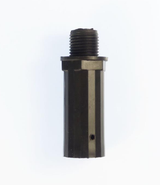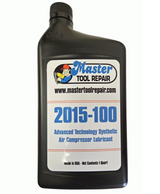Air Compressor Regulators: Advanced Troubleshooting Beyond Just "Adjustment"
Every air compressor user knows the standard fix for fluctuating line pressure: turn the regulator knob. But what happens when that simple adjustment fails to hold? When your regulated air creeps up overnight, drops suddenly during a task, or simply refuses to set accurately, you’ve moved beyond adjustment and into the realm of repair.
The regulator is the gatekeeper of your airflow, and when it fails, your tools suffer. Wasting time on constant adjustments is wasting money and power. This guide will take you deep into advanced troubleshooting, helping you identify and fix the underlying component failures that cause regulator issues, not just the symptom.
The 4 Advanced Troubleshooting Steps
1. The Silent Saboteur: The Leaky Check Valve
The most common problem mistaken for a regulator issue is actually a faulty check valve.
- Symptom: Your air compressor is off, and the line pressure (downstream of the regulator) slowly climbs higher than its set point, sometimes matching the tank pressure (a phenomenon called "pressure creep").
- Diagnosis: The check valve’s job is to prevent highly pressurized air in the tank from bleeding back into the pump or manifold when the unit is idle. If it fails, that high pressure back-feeds to the regulator output, making the regulator appear broken.
- The Fix: If you confirm pressure creep, the regulator is likely fine. You need to replace the check valve.
2. Internal Failure: Diaphragm and Seal Compromise
The core mechanism of your regulator involves a diaphragm and its associated seals. This flexible component is constantly exposed to pressurized air, oil vapor, and heat, leading to inevitable wear.
- Pressure Creep (Internal): A slow leak across a damaged main sealing surface or a worn O-ring allows high tank pressure to bypass the main valve and seep into the regulated side.
- Inability to Hold Pressure (Under Load): A rigid, torn, or pin-holed diaphragm can't effectively sense and balance the opposing forces, resulting in wildly inconsistent pressure or a massive pressure drop when a tool is engaged.
- The Fix: If the issue is confirmed internal, you will need a complete regulator replacement or a specific regulator repair kit.
3. The Input Test: Confirming Full Tank Pressure
A regulator cannot function correctly if it is not receiving the full design pressure from the tank assembly. Always confirm that the pressure switch and tank are delivering the correct input.
- The Test: Temporarily install a high-quality gauge directly at the tank-side port leading into the regulator input. Run the compressor until the pressure switch cuts it off.
- Result A (Correct): If the input pressure is correct (e.g., 125 PSI), the regulator is definitely the culprit, and you can proceed with replacement.
- Result B (Incorrect): If the input pressure is low (e.g., only hitting 100 PSI before shutting off), the issue is upstream: a faulty pressure switch, a tank leak, or a worn-out pump.
4. External Leaks: Connections and Manifold Integrity
Look beyond the regulator itself to its surrounding components, especially the manifold where gauges, safety valves, and quick-connect couplers are often mounted. Leaks here are common and can drain pressure, making it seem like the regulator can't maintain its set point.
- Gauge Threads: A common source of small, persistent leaks. Apply proper PTFE thread sealant when installing new components.
- Quick-Connect Couplers: These are the most frequent source of air leaks. A worn internal O-ring or seal in the coupler can cause significant pressure loss downstream.
- Safety Relief Valve: If this valve is hissing or leaking (even slightly), it can cause rapid pressure loss. Do not attempt to repair this valve; always replace a leaking safety relief valve.
A regulator that won’t hold pressure isn't just a minor annoyance—it's a sign of component failure that robs your tools of efficiency and wastes your time and energy. When the knob stops working, the solution is rarely a simple tweak.
Don't let a failing regulator hold up your work. Master Tool Repair stocks high-quality replacement Air Compressor Regulators, Check Valves, Pressure Switches, and Manifold components for virtually every major brand. Find your exact part and get back to reliable, consistent performance today!
Recent Posts
-
The Breath of the Pump: Why Your Air Compressor Needs a Healthy Crankcase Breather/Vent
Your air compressor is a powerhouse, a workhorse essential to your operation. We all know the import …Dec 4, 2025 -
The Quiet Killer: How a Clogged Air Compressor Filter Destroys Your Pump
A well-maintained air compressor is the lifeblood of your workshop or job site. It runs reliably, re …Nov 19, 2025 -
The Benefits of Synthetic Air Compressor Oil: Why It's Worth the Investment
Your air compressor is a powerhouse, an indispensable tool that keeps your business running. Yet, th …Nov 11, 2025




